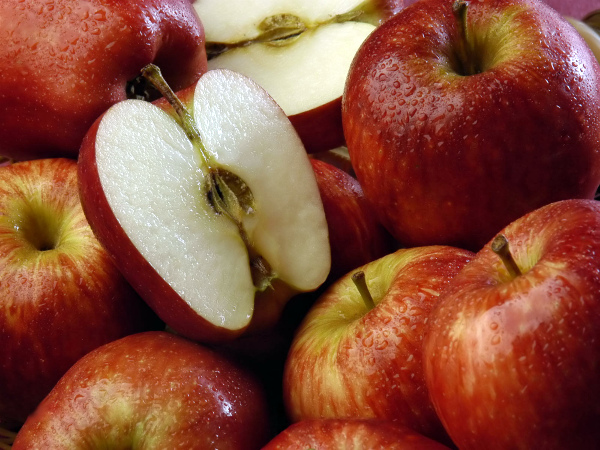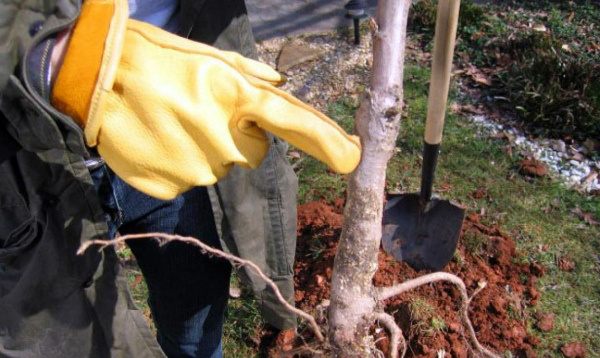All about the American apple variety Jonathan
Content
Historical reference
Apple trees of this universally beloved variety came to us from North America. They say that the material for the work of breeders was two now well-forgotten varieties - "Aesop" and "Spitzenburg". The work was carried out in a rather warm state of Ohio. Winters are warm there: temperatures rarely drop below zero, and summers are long and hot. In such conditions, the new variety wintered well, the fruits were not in a hurry to harvest "before frost".
The taste qualities of the fruits, their elegant decorativeness did not give rest to the breeders who wanted to regionalize "Jonathan" for cultivation much further north. The works of scientists were crowned with success. Since 1954, these apples can be grown in areas with a winter temperature of -15 degrees.
Jonathan remains a tempting raw material to work with, so scientists continue to experiment with it. On its basis, such well-known varieties as "Jonah Gold", "Jonared", "Aldared", "Prime", "McFree" and many others have been developed.
Description and characteristics of the variety
When describing this variety, attention is often focused on its early maturity. So, apples can be eaten already in the 4th or 5th year, in the 6th year, the entire crop is allowed to ripen (this can be from 15 to 18 kg of apples). Every year the apple tree grows, the yield increases, for example, a ten-year-old tree gives an average of 40 to 85 kg. There is a known case of obtaining 490 kg of apples from an adult tree.
Lack of moisture or nutrients in the soil will certainly affect the number and size of fruits.
Trees don't grow too tall. The descriptions state that the branches are located at an acute angle to the trunk, but the severity of the fruits and age force them to drop slightly downward, so a wide spreading crown is obtained. The bark is greenish brown.
Leaves are oval, slightly elongated, with raised, slightly wavy edges. Their color is green, but because of the strong silvery pubescence, they are found in different descriptions - “green with a bluish-silvery bloom”.
The botanical description calls this variety self-pollinated, but with natural pollination, no more than 3% of the fruits are tied, with artificial pollination - up to 7%.
Ovaries form much better if "Idared", "Mekintosh", "Golden Delicious", "Spartan", "Umanskoye winter" grow on the site (own or neighboring).
The fruits of this variety are very beautiful - round or round-conical with an even smooth surface, with a deep funnel and a closed cup. Glossy, shiny apples have a greenish-yellow color, which, as they ripen, fills with a bright red blush. Many apples are almost completely red by the time of harvest, with visible subcutaneous dots. The pulp is juicy, fine-grained, light cream or yellowish in ripe fruits, white-greenish in unripe ones. The taste is sweet-wine dessert with barely noticeable sourness, and the aroma is delicate, unobtrusive.The description itself makes you want to take a bite of the apple. The fruits can hardly be called large, they reach 100-140 g.
The middle of September is the best time for harvesting. The thin skin of apples turns out to be strong and elastic, it protects the fruit from mechanical damage. The stalk holds the apple firmly, preventing unwanted falling of the fruit. These factors undoubtedly contribute to the fact that most apples are perfectly stored until the end of winter, and in special conditions - until the end of spring. They are easy to transport.
The fact that the fruits of this variety are so well stored and transported largely explains its popularity.
Among the disadvantages are susceptibility to powdery mildew disease and low frost resistance. Indeed, when the temperature in winter drops to -20 degrees and below, the bark of the tree can freeze and become covered with scabs. Powdery mildew affects young leaves, shoots or even fruits with a lack of moisture, crowded plantings (crown thickening), excess nitrogen to the detriment of potassium-phosphorus fertilizers. But to scab "Jonathan" shows amazing resistance, it is not terrible even in the rainy summer.
Growing features
The apple tree should be planted in a sunny location so that all ringlets, spears, annual growths and fruit twigs on which the ovaries are formed can receive enough sunlight and fresh air. "Jonathan" grows well on sandy loams and loams, but it needs to be fed at least once every few years with potash-phosphorus fertilizers, compost or rotted manure (you can replace it with bird droppings).
If you want to settle in your dacha "Jonathan", remember how often in your area there is a winter temperature below -15 degrees. If this does not happen, feel free to go to a nursery or a specialty store.
Choose a seedling no higher than 80 cm without any damage and growth. It is better to plant an apple tree in spring, the end of April is perfect. For the first year - two seedlings are best shaded from direct sunlight. In the second year of the tree's life, you need to begin to form its crown, from then on, pruning should become annual.
Care consists in moderate watering, dressing, spring pruning, prevention of fungal diseases. In order to protect the tree as best as possible from powdery mildew, you need to remove the leaves and fallen fruits, prevent them from rotting under the tree, and regularly dig up the amniotic fluid. As a prophylaxis, spraying with Bordeaux liquid is used. If, nevertheless, the fungus has settled on young leaves (and the branches should be regularly inspected), you will have to treat the tree with special preparations according to the instructions. "Skor", "Topaz", "Fundazol" - all these chemicals give good results in the fight against powdery mildew. You just don't need to treat the tree with the same drug from year to year - its effectiveness decreases.
At especially low temperatures, the bole and skeletal branches are insulated, they can be tied with a special material (it should allow the tree to breathe) or use coniferous branches, reeds.
Storage and processing
Apples of this variety are grown not only in private farms for personal needs, but also on an industrial scale. The harvest is wonderfully stored. If you put it in a refrigerator or a special room for storage, where the temperature will not rise above +3 degrees, and the humidity will remain at the level of 85-95 percent, then such conditions will slow down the ripening of the fruits, and they will last until spring in the same state as they were ripped off. If the temperature is higher, the ripening process will not stop, the apples will become softer, the spotting characteristic of this particular variety (dark bitter spots on the skin) may appear. But they will still remain until February.
The fruits of "Jonathan" are universal in use - they are eaten fresh, canned, used in the preparation of table wines, wonderful preserves, jams, marmalades, juices and purees are prepared from them. They are very tasty as fillings for pies, they are involved in the preparation of sauces. All this is due to the large amount of sugars and the delicate structure of the fruit.
Video "Planting an apple tree" Jonathan "
In this video, the author shows how to properly plant an apple tree seedling. The variety "Jonathan" was taken for demonstration.






